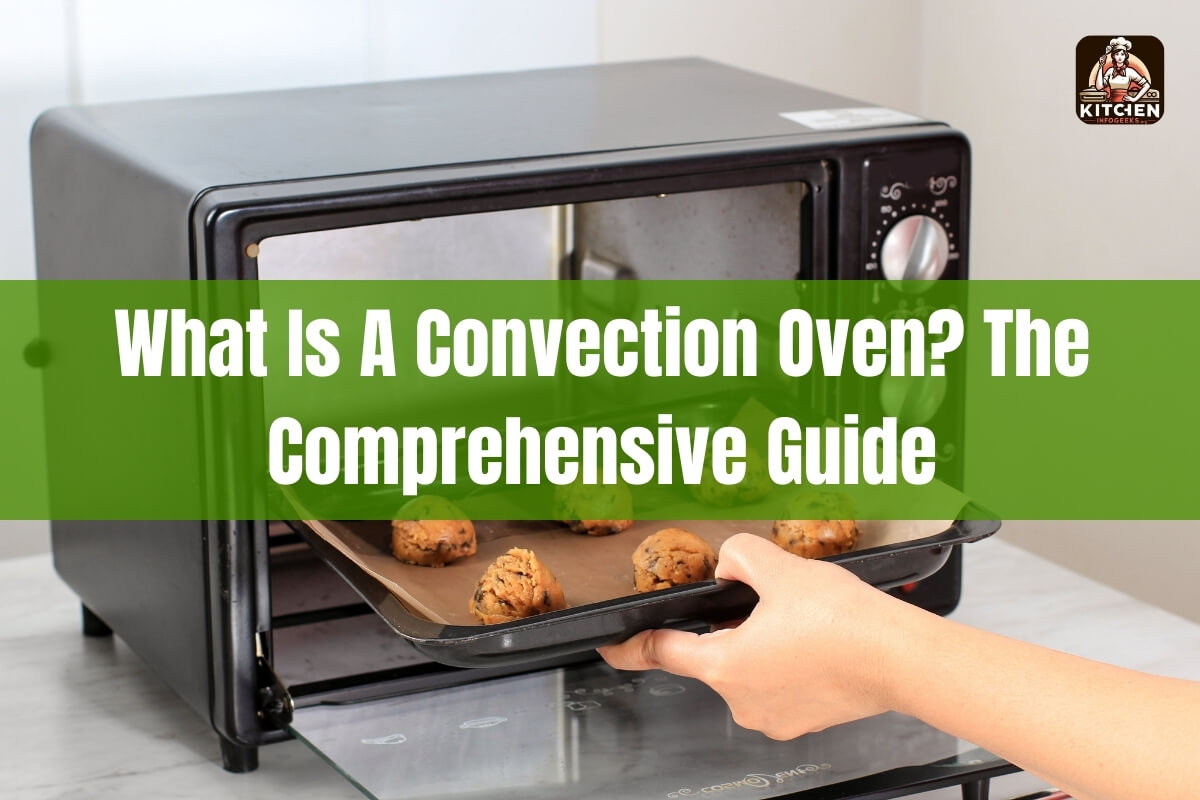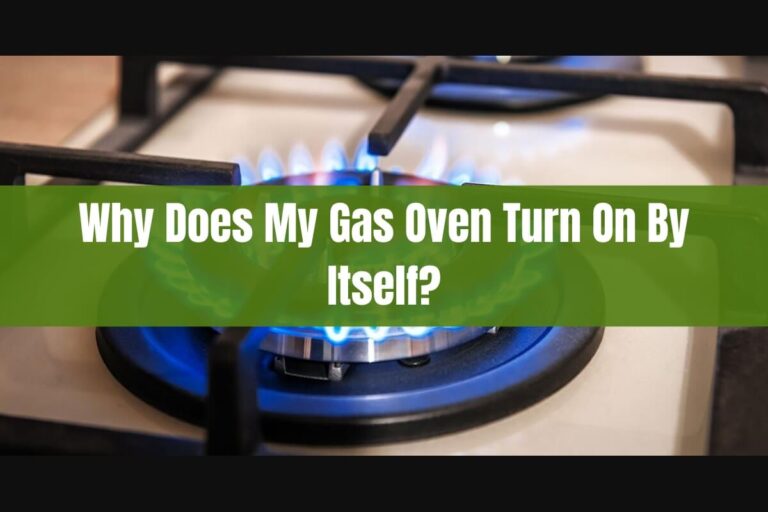
Have you ever wondered what the convection setting on your oven does? Or maybe you’ve heard about convection ovens but aren’t sure exactly how they work. A convection oven is an oven that circulates hot air using a fan, allowing for faster and more even cooking compared to a regular oven. This guide will cover everything you need to know about convection ovens – how they function, their benefits, when to use them, and whether they are worth the investment.
How Does a Convection Oven Work?
A convection oven has a built-in fan and exhaust system that circulates hot air throughout the oven cavity. The fan continuously moves the hot air around the food, providing a consistent heated environment. This allows for more efficient heat transfer compared to a traditional oven that relies solely on static hot air.
In a regular oven without convection, hot air rises to the top creating varied temperatures. The food nearest the heating elements can overcook while other areas remain undercooked. With a convection fan forcing the air to circulate, hot oven air surrounds the food from all angles for even browning and cooking.
The key benefits of this circulating hot air include:
- Faster cooking times: The constant airflow transfers heat more rapidly to the food.
- Even cooking and browning: No hot or cold spots mean food cooks and browns uniformly.
- Crispier texture: The drier circulating air removes moisture for crisper crusts and exteriors.
- Energy efficiency: Food cooks faster at lower temperatures, reducing energy usage.
Convection Oven vs Regular Oven
The primary difference between a convection oven and a conventional oven is airflow. A regular oven has heating elements (usually top and bottom) that radiate heat without forced air circulation. The still air creates varied hot and cool zones, requiring techniques like rotating pans.
A convection oven eliminates these hot spots by using a fan to constantly circulate heated air around the food. This provides consistent heat for even cooking without having to rotate pans or shift food positions.
When it comes to deciding which type of oven to use, consider the dish you are preparing:
Use a Convection Oven For:
- Roasting meats and vegetables (promotes browning and crispy textures)
- Baking cookies or pastries on multiple racks
- Toasting or dehydrating foods
- Anything you want cooked quickly and evenly
Use a Regular Oven For:
- Baked goods that need to rise properly (cakes, breads, soufflés)
- Delicate dishes like custards or flans
- Recipes not requiring a crispy exterior
The convection setting is ideal for most oven-cooked savory dishes thanks to the drier environment and even browning. However, the circulating air can disrupt delicate batters and doughs meant to rise slowly.
Types of Convection Ovens
Convection technology can be found in several different oven styles:
Ovens with Convection Setting
Many modern ovens come with both standard bake and convection bake settings. The convection setting turns on the built-in fan to circulate air. These ovens allow you to choose between conventional or convection cooking.
Built-In Wall Ovens
Higher-end kitchen renovations often include separate built-in wall ovens, many of which come with true convection settings for easy whole oven air circulation.
Countertop/Toaster Ovens
For smaller cooking jobs, countertop and toaster ovens with convection fans can be great space-saving options compared to a full-sized oven.
Convection Microwave Combos
Certain microwaves also include a convection fan and heating element, combining microwave speed with convection oven browning capabilities.
No matter which type you have, look for clear convection settings and instructions from the manufacturer before first use.
Using a Convection Oven Properly
While convection ovens have many advantages, they require some adjustments from standard oven recipes and cooking methods:
Temperature Adjustments
Since convection air cooks faster, most recipes will instruct you to lower the oven temperature 25°F below the listed temperature for a conventional oven. Some modern ovens may automatically adjust this for you.
Reduced Cooking Times
Due to the intense air circulation, your food will likely cook 25% faster than the listed recipe time. Start checking for doneness about ¾ of the way through the baking time.
Suitable Cookware and Positioning
Use oven-safe pans or baking sheets with low sides to allow maximum air circulation. Avoid overcrowding pans and leave space between them so air can flow properly.
Good options for convection cooking include:
- Roasting pans or dishes with lower walls
- Rimmed baking sheets for air flow underneath
- Oven-safe racks or cooling racks for maximum exposure
Foods not suited for convection include:
- Delicate batters like soufflés or custards
- Items that need to rise like breads and cakes
- Dishes cooked in tall, narrow pans or covered casserole dishes
Mastering your convection settings takes some trial and error. Start experimenting with your go-to recipes while carefully monitoring cook times.
Convection Oven Cooking Tips
To get the most out of your convection oven:
Achieve Crispier Textures
The dry, circulating air is ideal for achieving crispy crusts on dishes like roasted meats, baked potatoes, and toasted nuts or breadcrumbs. Use a low-sided baking pan and give foods a light coating of oil or butter.
Master Multi-Rack Baking and Roasting
You can bake or roast on multiple oven racks simultaneously without having to rotate or stagger the pans. The circulating air means each rack gets equal heat exposure.
Rotisserie Roast Meats and Poultry
Some ovens come with rotisserie settings for slow self-rotation. Combined with the convection fan, this produces extremely juicy, evenly-cooked meats with crisp, browned exteriors.
Cook From Frozen Faster
Denser frozen items like chicken breasts or burritos will cook up to 25% faster compared to a regular oven without heated air circulation.
Switch Halfway Through
For very thick or dense baked goods, consider baking the first half on regular setting to allow for rising. Then switch to convection for the second half to achieve a nicely browned exterior.
Benefits of Convection Ovens
The biggest advantages of convection ovens are:
Faster Cooking Times
With hot air circulated directly around the food, dishes cook up to 25% faster than in conventional ovens. This means convection can cut 15-20 minutes off a 1-hour bake time.
Even Browning and Crisping
The consistent heated air means food browns and crisps more evenly on the exterior without burning or undercooking certain areas.
Energy Savings
Because convection cooking is faster, you use less overall energy compared to conventional oven times. Lower cooking temperatures also contribute to reduced energy consumption.
Cook Multiple Racks at Once
Unlike conventional baking where you need to stagger racks, the circulating air allows for even multi-rack cooking of items like cookies or roasted vegetables.
For frequent oven users like avid bakers or large families, the time and energy savings of convection can really add up over months and years.
Are Convection Ovens Worth It?
Whether a convection oven is worth the investment depends on your cooking habits and needs:
Best For:
- Frequent oven use for savory dishes like roasted meats and vegetables
- Multi-rack baking or oven meal prepping
- Craving crispy browned textures without deep frying
- Oven cooking for larger families
- Replacing aging ovens in kitchen remodels
May Not Be Ideal If:
- You rarely use your oven outside of occasional baking
- Your preferred dishes require delicate rises or water baths
- You have a small kitchen with limited oven space
- You’re working with a very tight budget
Convection models can add $100-300 to the cost of an oven versus conventional models. For avid oven users who can take advantage of the benefits, the investment can easily pay off over time through energy savings and superior results.
But if your oven gets light use focused on delicate bakes, you may be fine sticking to a quality conventional model. Evaluate your personal cooking needs and budget to decide if convection is worthwhile for your household.
Convection Oven vs Air Fryer
While convection ovens and air fryers both use convection technology to circulate hot air for faster, crispier results, there are some key differences:
Size and Capacity
A full-sized convection oven can easily fit large trays, multiple racks of food, and bigger items like a whole turkey. Air fryers have a much smaller capacity, typically just enough for 1-2 servings of food like french fries or chicken wings. This makes convection ovens better for larger portions or families.
Intensity of Air Flow
The smaller cavity of an air fryer allows for ultra-intense air circulation and hotter temperatures compared to a convection oven. This makes air fryers better suited for maximizing crispy, fried-like textures on foods.
Versatility
While great for faux-frying foods, air fryers have limitations in terms of baking, roasting, or dehydrating. Convection ovens can handle a much wider range of cooking tasks like baking bread or roasting a large cut of meat.
Countertop vs. Built-In
Air fryers are compact countertop appliances, while convection ovens are larger built-in appliances that are part of your oven or oven range. This makes air fryers more convenient for small kitchens but less ideal for large-scale cooking.
For maximum versatility and cooking large portions, a convection oven is the way to go. But for quick air-fried snacks and incredible crispy textures on smaller foods, an air fryer can be a worthwhile secondary appliance alongside your oven.
Some higher-end models even offer an air fryer mode or setting that combines intense hot air circulation with bottom heat for that signature crispy, evenly-cooked result. This bridges the gap between the two appliances.






